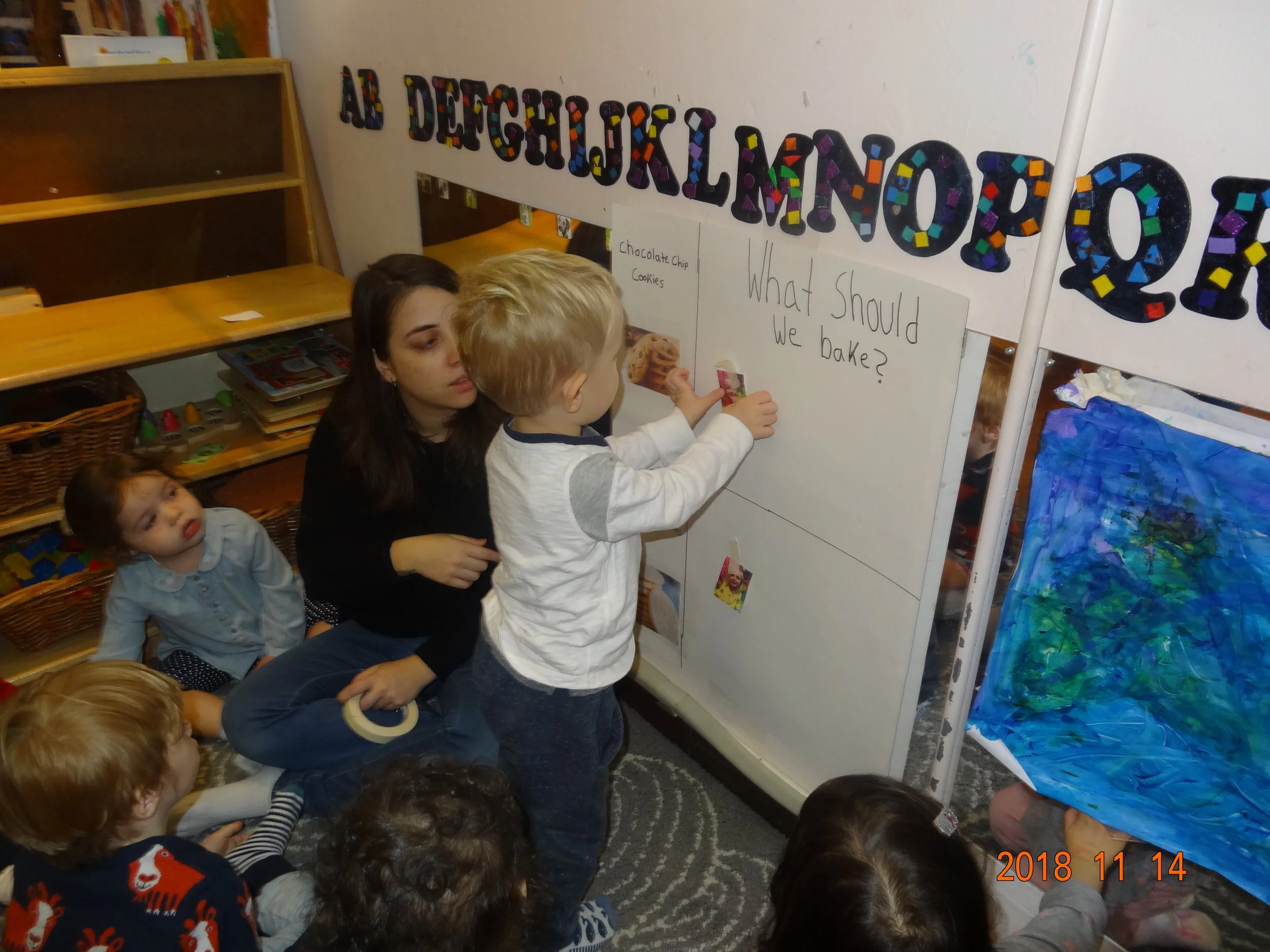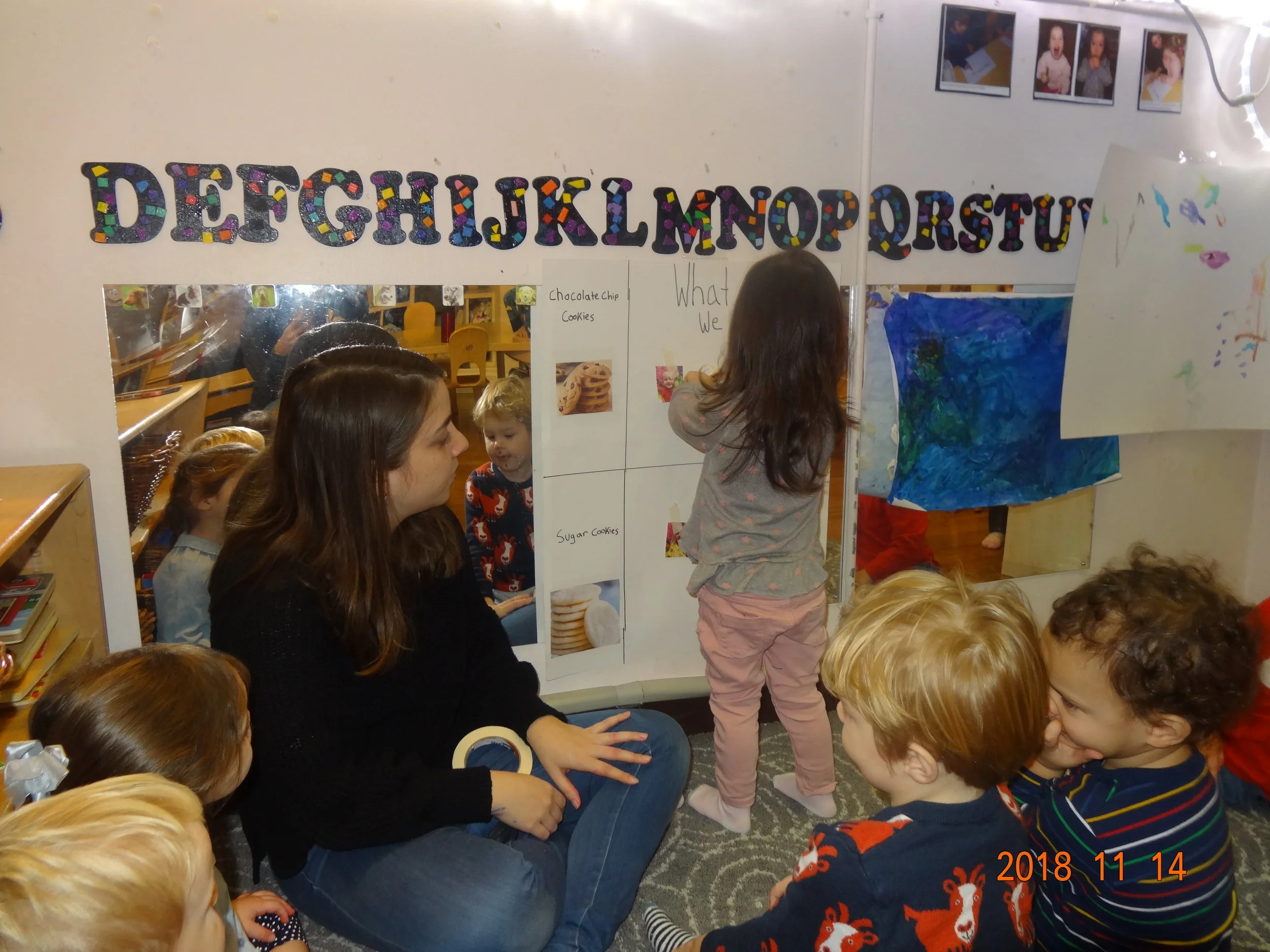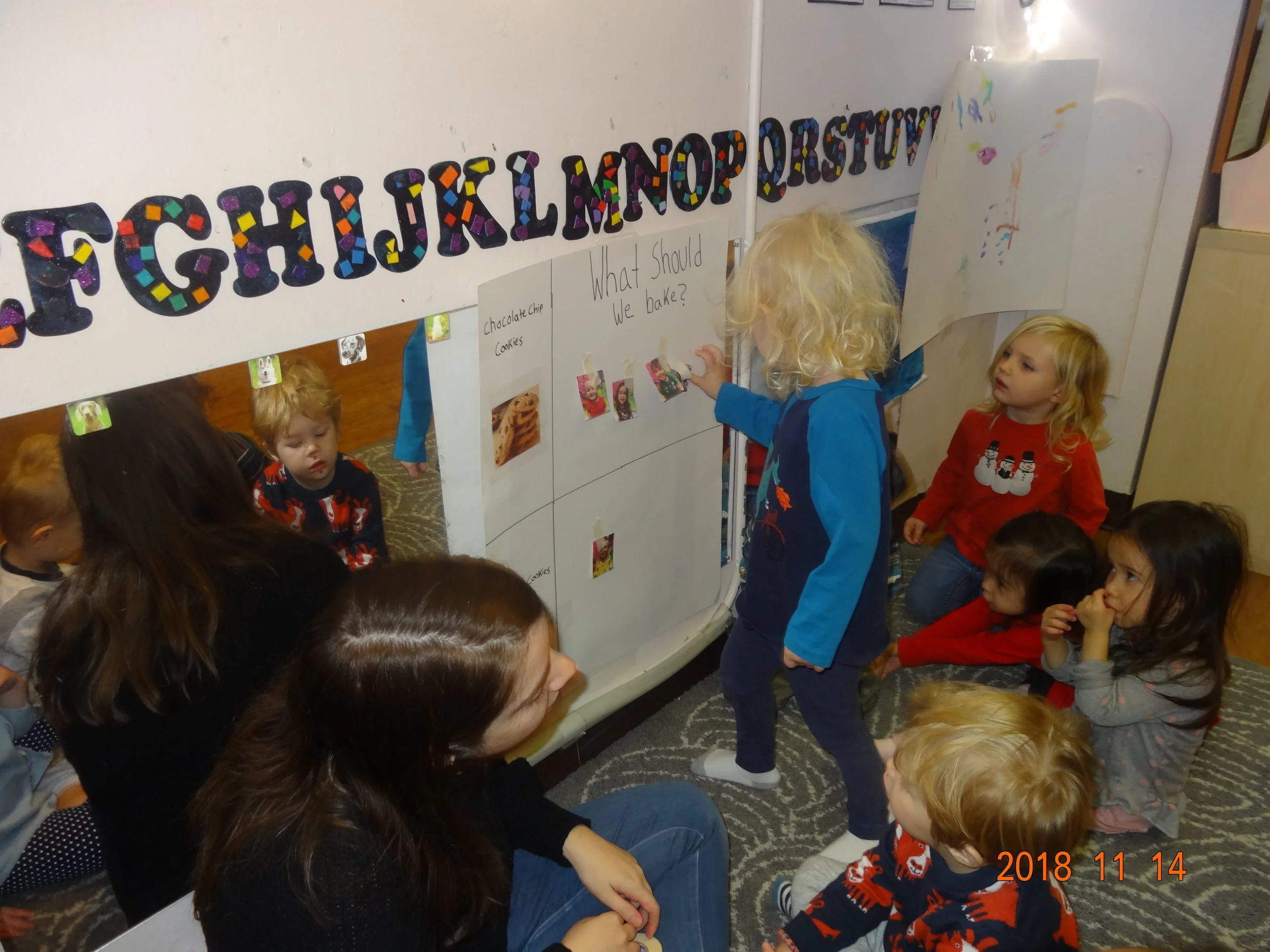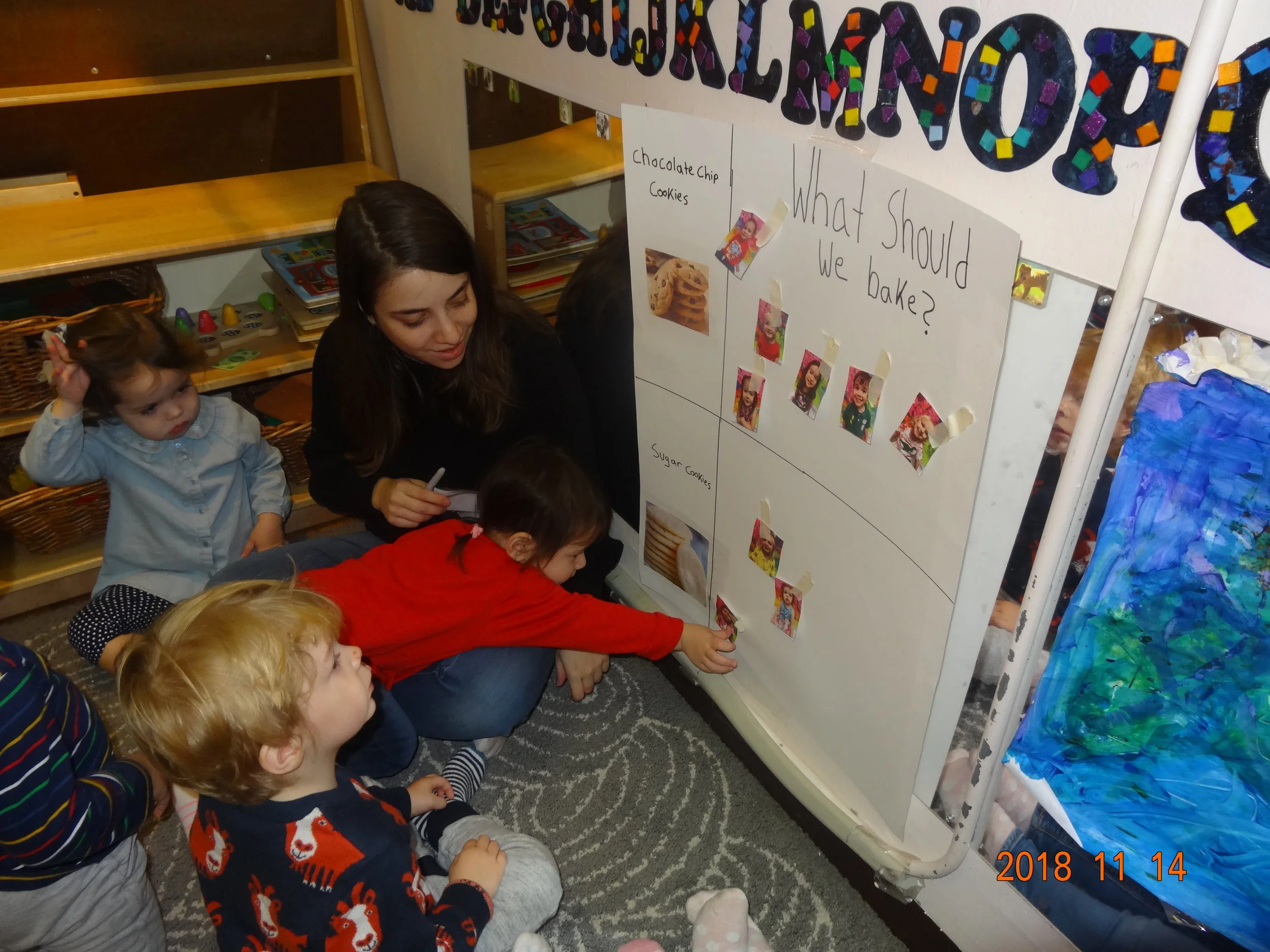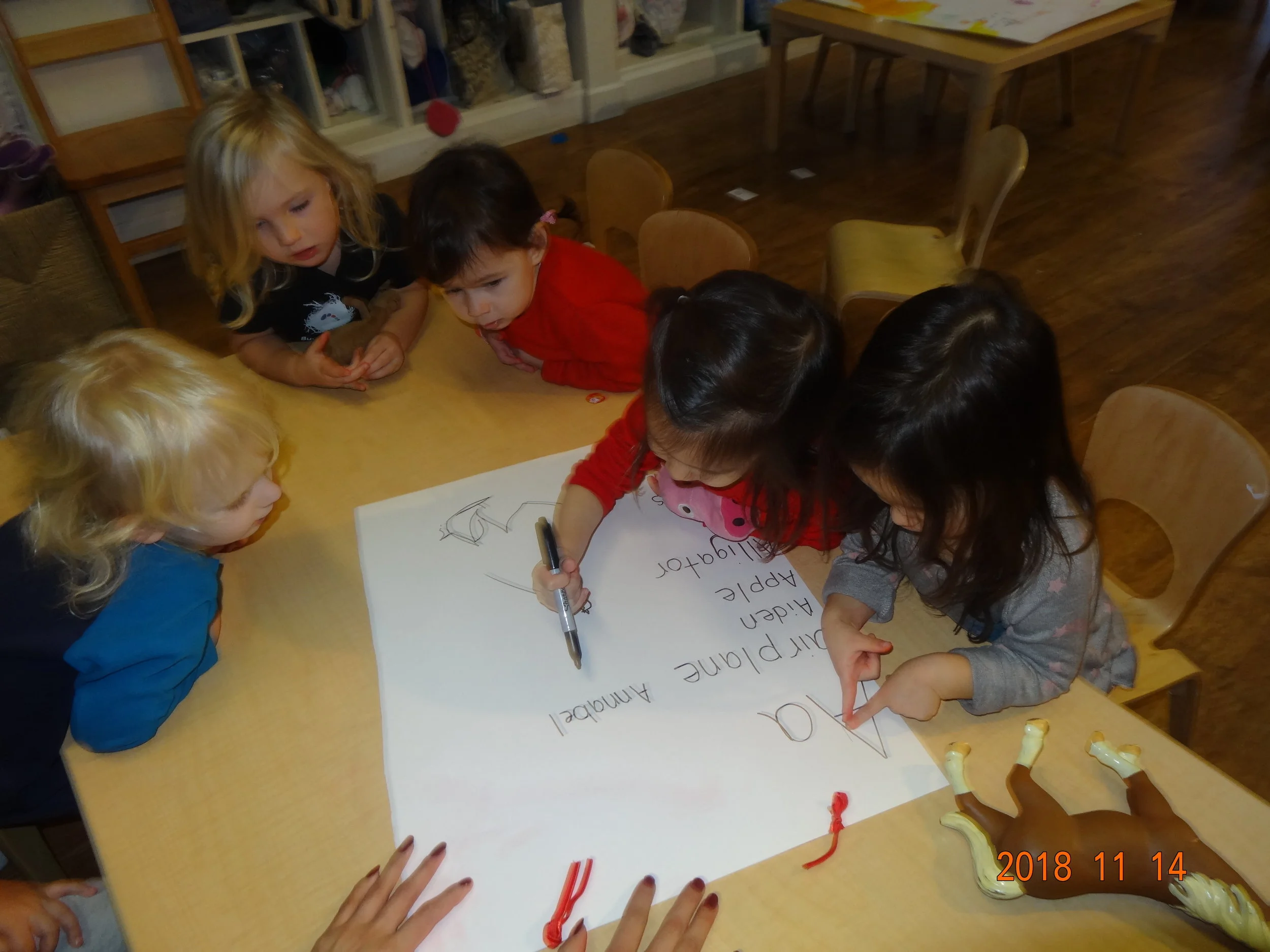As the students have transitioned well into the classroom and have settled into school, we have been able to branch out into more complex notions and activities. Over the last week or so in particular, we have begun two different processes with the students that push them to think more deeply. Beginning last Friday, we did a shortened vote when making playdough. We had two colors available, red or green. Each child got to select what color they were thinking of (were given a corresponding peg) and we counted together to see which had the most votes.
We decided to revisit voting once again this week when we voted on what kind of cookies we should bake for our grownups. This time, however, the children were given a picture of themselves and they had the opportunity to select what they wanted. We had words and pictures on the voting chart, and as each child stood up to vote, we asked them to state out loud what they were choosing, then tape up their picture. The children were very invested throughout the process, excitedly saying which friend had a turn to vote. Once everyone had voted, we counted together to see which had the most votes. Even the students who voted for the other option, were eager to participate and then joined in on making the cookies.
In both instances of voting, the friends counted the votes in to determine which number was the biggest. In addition to introducing number sense in a meaningful way, voting is a tangible way for us to provide a democratic environment for our students. Creating these opportunities in the classroom gives children the chance to share and negotiate their ideas and perspectives. It also creates a way for the students to relate to one another. When students are a part of a democratic environment, they know that their voices are heard and that their citizenship in the classroom is highly valued.
While this time, we voted on two cookie ideas that the teachers came up with, next time we plan to take suggestions from the students on what to make and then have them vote on their own ideas. We appreciate opportunities for the students to show their independence in the classroom and take ownership over projects.
Additionally, this week we also began introducing letters of the alphabet, starting with A. Together as a class, they came up with words beginning with the letter A, as well as the names of people around the school. After coming up with our list, the children then each had a chance to practice writing the letter A. Although every attempt produced was a scribble, it was a clear representation of a letter through symbol. We will continue to go slowly through the alphabet, brainstorming words and names and initial letters in their own names. This will serve as just a basic introduction to the alphabet to begin to help the students familiarize themselves with the letters.
As the children continue to get older over the course of the year, we look forward to continuing to do more complex activities and tasks with the students to help push and challenge them beyond what they already know.



